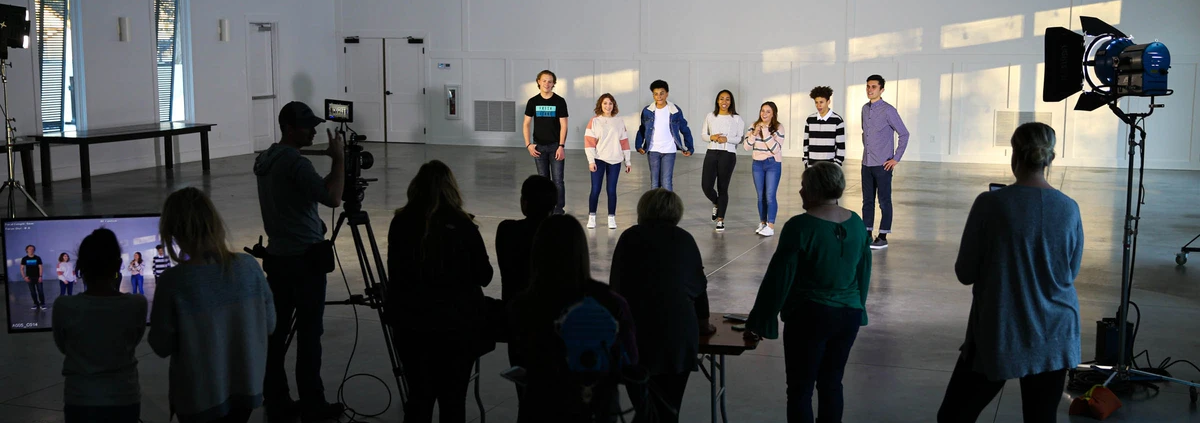How to Make Videos for Social Media: Ultimate Guide for 2023
Social media is a mystery. Some people work for months or years to build a following, and others go viral on the first video they ever post. But there’s no mistaking it: social media can be incredibly beneficial for building your business if you reach the right people.
A 2023 study found that video content helped generate leads for 84% of marketers! It’s clear that video marketing and social media aren’t going anywhere anytime soon. So, are you planning to leverage both in order to help your business grow?
Follow our 7-step guide to learn how to make videos for social media that engage your audience!
Step 1: Decide How You’ll Film Your Videos 🤳
You have a few options when it comes to physically filming your videos. You can use:
- A smartphone camera
- A DSLR camera
- A professional video agency
If you want your videos to be as high-quality as possible, you might opt for using a pro-level camera or hiring an agency to film a large batch of videos for you. But if you’re just starting out and testing the waters, a smartphone camera will do just fine. There are ways you can level up the quality of your smartphone videos, which we’ll touch on in step 3.
Step 2: Come Up With a Strategy 🧠

To make your social media videos as worthwhile as possible, don’t shy away from creating a strategy. This should involve:
- Audience research
- Content calendars/scheduling
- Budgeting
- Task delegating
- Competitor research
Try to narrow down your intention for creating video content. Is your goal to gain more followers on any given platform? Increase brand awareness? Boost sales for an upcoming launch? Be clear about your objectives, and you’ll have an easier time streamlining your content.
You can create scripts for your videos, rough outlines, or, better yet, follow popular social media trends. Video trends rule popular platforms like TikTok and Instagram. As soon as you notice a new trend taking off, hop on the trend with something applicable to your business! It’s always best to join in on video trends before they get too oversaturated because they’re always quickly changing.
Step 3: Prioritize Lighting and Sound Quality 💡🎤
Now for the details within your videos. If you don’t want people to immediately scroll past your social media videos, you’ll need to put some thoughtful consideration into the quality of your lighting and sound.
Lighting Quality
Natural light is always your best bet for filming social media video content. If you’re shooting your video indoors, film in front of a window. Avoid having natural light behind you and none in front of you. If you’re filming outdoors, consider doing so in these optimal lighting conditions:
- Cloudy, overcast days
- Golden hour (starts the hour before sunset and continues until the sun has set)
- Blue hour (20-30 minutes after sunset or before sunrise)
If you’re filming indoors and don’t have a lot of natural light, you can create a primo lighting setup with lamps, candles, and other lighting sources. Follow the 3-point lighting setup:
- Key light: Place this at “4 o-clock” off to the side but still shining on your subject. This should be the brightest of the three lights. It can be a ring light, studio light, or bright lamp.
- Fill light: The purpose of the fill light is to eliminate the shadows caused by the key light. Place this at “8 o’clock”— a similar position to your key light but on the other side. This should be lit to roughly half the intensity of your key light.
- Backlight: Create depth with a backlight or “practicals.” This is a fun one! Place a candle, small lamp, lava lamp, or any other smaller light behind your subject and slightly off to the side.
Check out this tutorial below to get a visual guide on how to set up 3-point lighting!
Sound Quality
Unclear video sound where you can’t make out what the subject is saying is an instant turnoff for video posts. For high-quality videos, pay attention to your sound. This one is pretty simple as long as you’re intentional about it!
Use an external microphone because the built-in microphone on your smartphone isn’t the clearest. You can find affordable clip-on external microphones that connect to your device via Bluetooth.
Try to avoid filming somewhere with external noise like traffic, barking dogs, or a loud appliance running. However, if you simply can’t avoid unwanted external noises, using a lavalier microphone will help eliminate distracting noises.
Step 4: Keep It Short and Sweet 🍭
No matter how hard it is to admit, our attention spans are getting shorter. It has been proven time and time again that Instagram videos and other social media videos perform best when they’re two minutes or less.
When solidifying your strategy, scripts, and outlines, be sure to keep the information bite-sized. Whether you’re following a video trend or sharing a brand video, resist the temptation to make it 10 minutes long.

Capture the audience’s attention in the first couple of seconds. That’s when they’ll decide to either keep watching your video or scroll on to view something else. Mention a thought-provoking topic or question, begin with an eye-catching visual, or jump out the gate with something funny.
End your video with a call to action. Don’t do this for every video, especially if you’re simply participating in video trends. But, if you’ve posted a brand video, end your video by asking people to follow your account, sign up for a free trial, or whatever else your campaign goal is.
Step 5: Add Subtitles ✍️
If your video has people talking or music with lyrics, be sure to include subtitles! This is an incredibly important step to ensure your social media videos are accessible to people who are deaf and hard of hearing.
Subtitles even go beyond accessibility and anyone to watch your video in a public space where they may not want to turn the sound on. It’s a simple, quick extra step that helps include your entire audience.
Pro Tip: If you use an automated subtitle generator, take the time to go back and ensure that the subtitles are accurate, and edit them if they aren’t. An extra few minutes of your time can add an immense amount of quality to your videos.
Step 6: Add Music (Legally) 🎶
Music, even if it’s just subtle background music, can allow you to connect with your audience. Utilize trending sounds or simple LoFi beats to amplify your video content and engage your viewers.
If you’re planning to use a sound that isn’t already preloaded on the specific platform, make sure you legally have the rights to use the music. If you don’t want to go through the hassle of music licensing, opt for public-domain music.
Step 7: Optimize for Different Platforms 💻
Different social media platforms configure their videos in different ways. On TikTok and Instagram, videos are configured vertically so that they take up the entire smartphone screen without rotating it.
YouTube videos are best configured horizontally, as many users watch YouTube videos on their laptops and televisions in addition to their smartphones.
Looking to Pass the Task of Making Social Media Videos Off?
This guide should help you create engaging short videos for social media. But if you’re already feeling over-saturated with your workload, you may be stressed out thinking about creating your own social media videos.
Thankfully, you can outsource this task! The skilled producers at Stringline Pictures specialize in creating brand videos, corporate content, and everything in between. If you want to get a convenient batch of high-quality social media videos, reach out to Stringline today to schedule a consultation!



